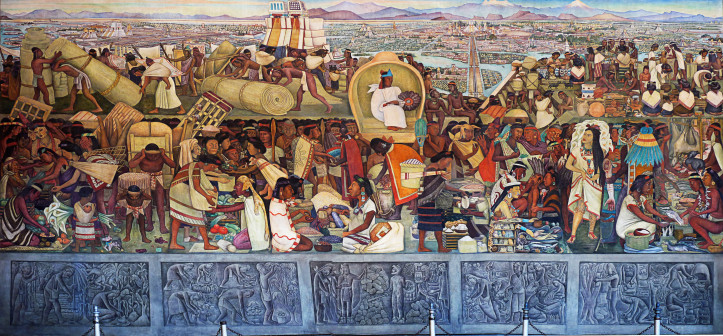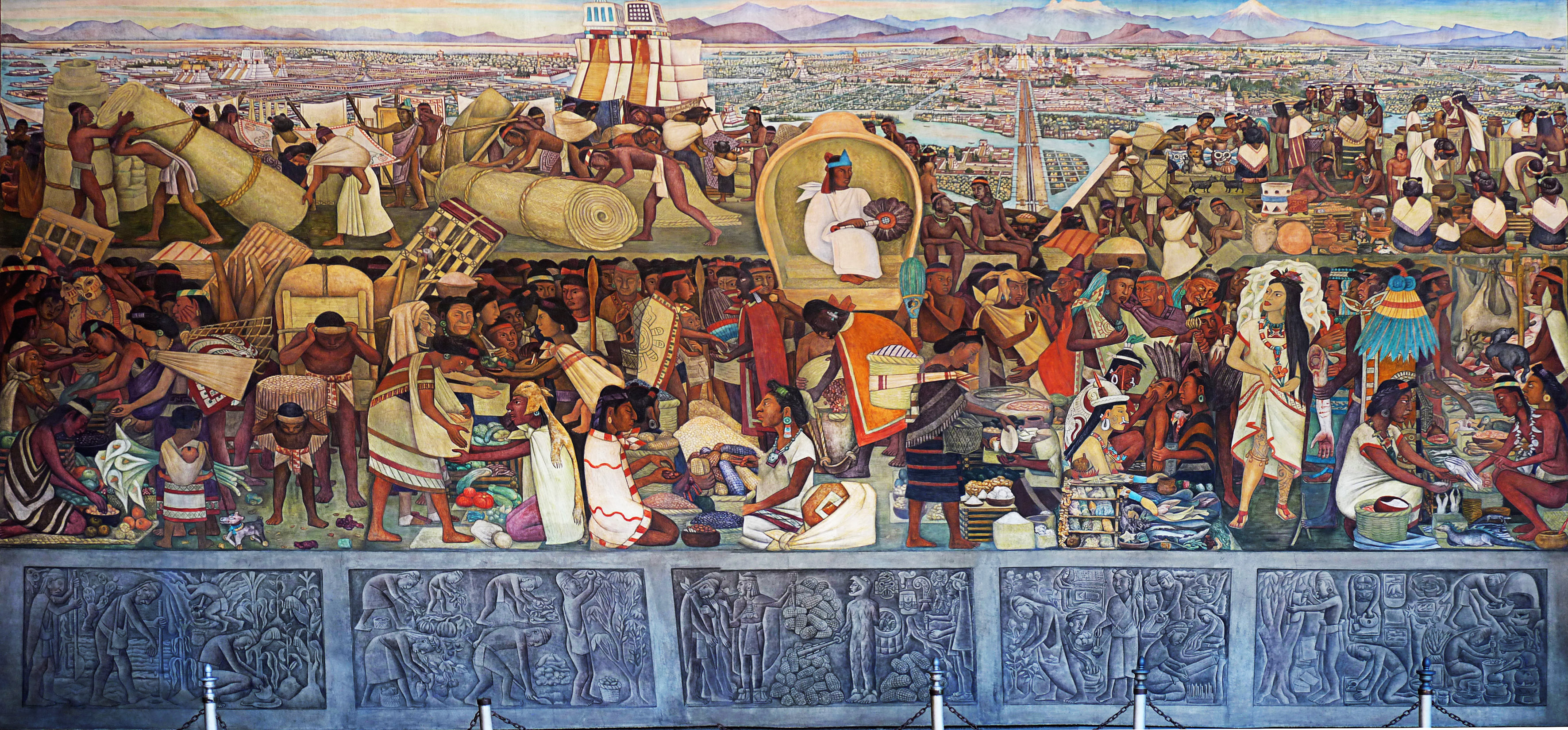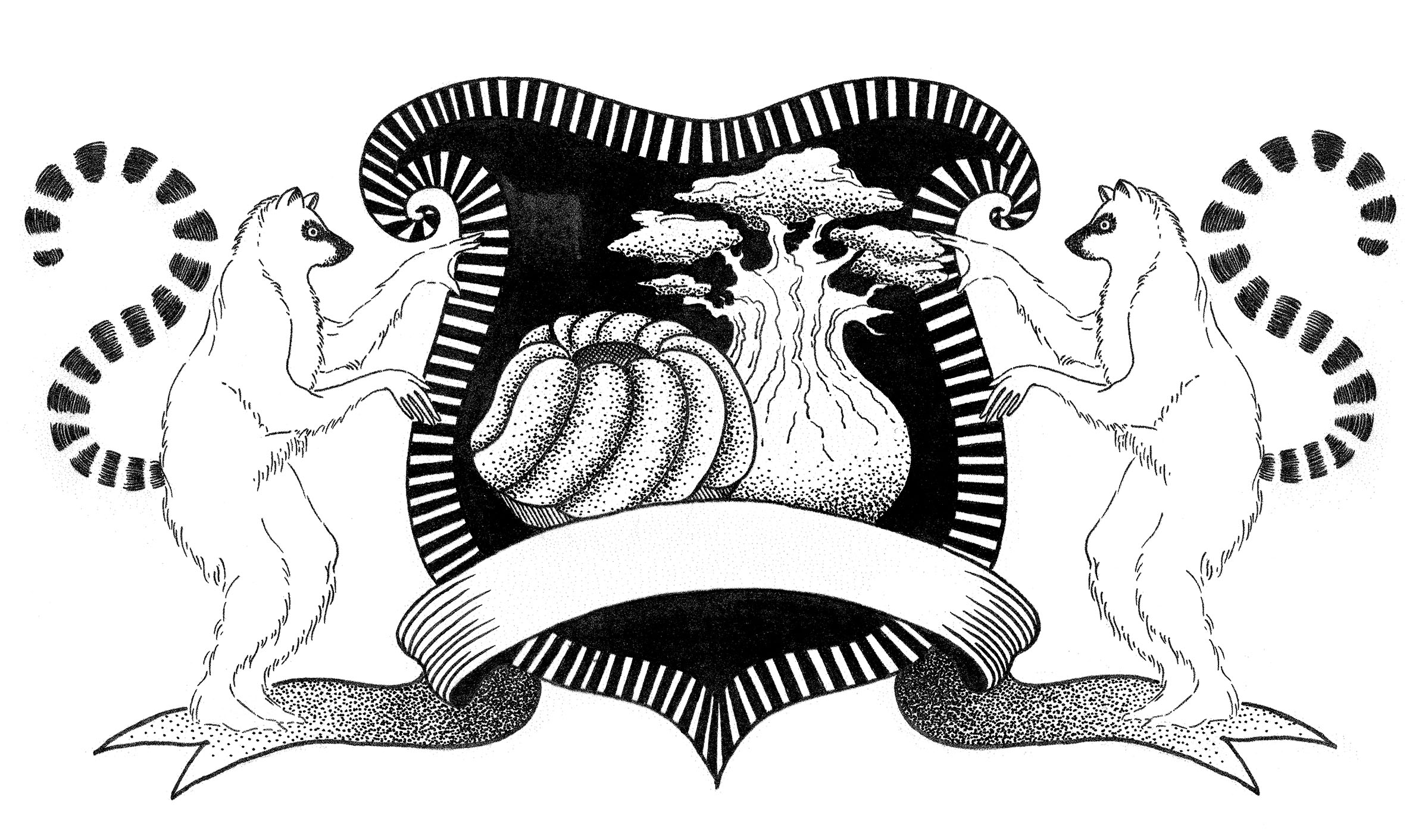
The sentimental depiction of the discovery of the New World as a great adventure is one of the biggest lies in human history. This is why it should come as no surprise that statues of Columbus and Cortés are being toppled. During just the first 50 years of colonization, the Indigenous populations of the Americas were reduced by 90%.
In his book Tristes Tropiques (Sad Tropics), Claude Lévi-Strauss rightly observes that the first encounter between Europeans and the Indigenous peoples of America should be considered the greatest adventure in the history of humankind, which is rather unlikely to be measured up to unless some alien civilization pays us a visit someday. It must have been a breathtaking experience to see for the first time the jungle, paradisical coastlines, volcanoes, animals that brought to mind mythology, cities with large markets, and people speaking languages unknown to the colonizers. When Bernal Díaz del Castillo – one of the foremost chroniclers of the conquest – first saw Tenochtitlán, the capital of the Aztec Empire, he thought he was dreaming. During the second and third expedition, Columbus observed his new surroundings so intensely that his eyes would bleed.
It’s worth remembering that in the past most Europeans were separated from radical otherness. In the 15th century, the route to the East was blocked by the Ottoman Empire. Africa, on the other hand, was usually circumnavigated. There was only the distant memory of ‘paganism’, as preserved in the works of Greek and Roman authors.
Part of the landscape
Initial descriptions of the ‘new’ societies didn’t herald the genocide that was about to happen: Columbus was convinced that he had discovered a paradise. European institutions tasked with establishing the identity of America’s Indigenous peoples pondered the following questions: were the natives descendants of Israel’s lost tribes? If so, were they Jews (this was the idea of the Dominican monk Diego Durán)? What if they were the exiled Mongols or the Scots? Or the pagans who had been baptised by St. Thomas, but relapsed into idolatry? As Durán claimed, when St. Thomas visited the Aztecs, they thought he was the God Topiltzin, since both were believed to carve in stone.
Columbus’s writings demonstrate that at first he was in awe of the new lands. Still, given that those reports were addressed to his rulers and benefactors, he simply might have wanted to present his ‘discoveries’ in a good light. We learn, for example, that he spent long hours contemplating American nature. It’s clear, however, that he wasn’t that much interested in the native people, whom he treated as part of the landscape. Moreover, Columbus had a quite peculiar personality. His expeditions were meant to raise funds for something that was already ridiculed in his time, but which he approached very seriously – another crusade. An avid reader of Marco Polo, Columbus wanted to reach the lands ruled by the Great Khan because of his love for gold. Apparently, already upon his first encounters with Indigenous tribes, he would ask about the gold parts of their jewellery. Nonetheless, gold was only a means to an end, and his ends were religious.
In fact, Columbus’s accounts of his conversations with native people are hilarious. He would either communicate through gestures, or search for phonetic similarities between native languages and the languages he knew: Latin, Spanish, Portuguese and Italian. Whenever he had to choose a person to communicate with a local chieftain, he would send someone who spoke either Hebrew or Chaldean.
A crusade for crusading’s sake
Hilarious as it might seem, Columbus’s ignorance wasn’t innocent. His awe-filled descriptions of America, his observations about the kind-heartedness and hospitality of the Indigenous peoples, which contributed to the ‘good savage’ myth, intermingle with remarks that the natives would “make good servants”. A few years later, Columbus openly pondered the idea of enslaving Native Americans. His main concern was whether it would pay off. Although he could picture the natives as future Christians, at the time he considered them lesser humans. Paradoxically, his great piousness blinded him, hindering moral action. As recounted by other colonizers, while Columbus himself was an ascetic, he didn’t object to sending Native American women to the cabins of his fellow-adventurers, who would rape them. On his third voyage to ‘New Spain’, he took with him prisoners released on parole. One might wonder what special skills their criminal record was evidence of. What’s more, Columbus came up with an idea that became very popular during the conquest: hunting for the natives with the aid of dogs. It’s striking that the Native American perspective on Europeans was entirely different: they approached the newcomers with kindness, perceiving them as gods’ messengers or even gods incarnated.
In the 20th century, when scholars began to publish original texts by the Aztecs and Maya, we were offered a great opportunity to look at the conquest from the perspective of the colonized rather than the colonizers. From the first-hand Inca Account of the Conquest of Peru by Titu Cusi Yupanqui, an Inca ruler, we can learn why the Spaniards were treated as Viracochas (gods). This was because they came with the wind (sailed), rode horses (at first, the natives weren’t sure if conquistadors and their horses were separate creatures, and some Spaniards confirmed this assumption by burying their horses), they talked with a “white cloth” (they could read, which for the natives was something magical, and perhaps rightly so), threw thunder (had cannons and gunpowder), grew beards, and uncovered only their face and hands. The Aztecs believed that Hernán Cortés was the God Quetzalcoatl, who had returned to his kingdom. Cortés would cynically strengthen that belief, which helped him conquer Mexico. It is said that when the first rebellions took place, the natives would check if the corpses of Europeans were decomposing. If they weren’t, it would indeed mean that they were gods.
Gods of death
The Spaniards, on the other hand, definitely didn’t regard America’s Indigenous peoples as gods. On the contrary, they pondered whether they were humans or animals (by the way, being considered an ‘animal’ doesn’t necessarily have the same implications for other, non-European, inhabitants of the globe). In 1517, the learned monks from the Order of Saint Jerome were to decide whether America’s natives were capable of living like villagers from Castille. The questionnaire-based answer was negative. The monks agreed that it was more beneficial for the natives to become slaves than ‘animals at large’. They were considered ‘guilty of’ refusing to work for free, give away their property and turn away from those tribesmen whose ears were cut off by the Spaniards.
No single reason can convincingly explain the cruelty, genocide, rape and moral corruption witnessed only over the first 100 years of the conquest. Greed and ambition don’t seem to explain it. Did the colonizers think that the physical distance from their country of origin, governed by law, made all laws ineffective? This also doesn’t account for what happened.
The murderous rage and ruthless conquest have, however, a religious ‘justification’: evangelization of the Indigenous peoples who, from a Christian perspective, were pagans. The Aztecs, who followed a bloody ritual of human sacrifice, seemed to the Europeans to be devil worshippers. Another possible reason was the territorial expansion of the Kingdom of Spain. It was absurd, however, how the Spanish would read out decrees filled with official and bombastic jargon, in the presence of a public notary, and say that they hereby take possession of a given territory and if someone objects to it, they shall be declared the enemy of both the Crown and the Church. What made it even more absurd was that those documents were never translated into the languages spoken by America’s Indigenous peoples. Nobody ever consulted native tribes on any of these matters. From the very start, it had been assumed that they were the ones who had to bend their knees to a king and god they didn’t know, and serve a kingdom they’d never heard of. Columbus followed the exact same logic when he arrived in Haiti – no, pardon me, in ‘Hispaniola’. Nevertheless, even a superficial reading of historical records suggests that neither converting the natives to Christianity nor showing loyalty to the Kingdom of Spain was the major motivation of colonizers. Those who came to the Americas were mainly motivated by gold.
It was the beginning of the modern era. In Europe, it had become possible to buy nearly anything that was thought to have value. For America’s Indigenous peoples, however, the obsession with gold was totally incomprehensible. The Taíno tribe thought, for instance, that Christians considered gold to be either God himself or God’s food, which is why they needed so much of it. They simply couldn’t think of any better explanation. They didn’t find gold particularly valuable, as they had no equivalent of the European trading system. Hatuey, the Taíno chief, would dance together with his people around a basket filled with gold and jewels to receive the Christian God’s grace. He was hoping that God would order the Christians to leave his people alone. After the dance, they would throw gold into the rivers, fearing another Spanish attack. Soon afterwards, chief Hatuey was burnt alive.
Montezuma, the Aztec king, would send gold directly to Cortés, hoping that if the conqueror got what he wanted, he would leave his country. But it produced the opposite effect: the more gold Cortés got, the more he wanted. Montezuma had another idea. He offered the conquistadors the daughters of his dignitaries, but that also wasn’t enough. In consequence, Mexican women were so afraid of the Spaniards who raped them that they would smear their faces with mud to make themselves look less attractive.
Witness to horror
It’s hard to imagine that things could take a worse turn, but it would have happened if not for one of the most fascinating figures of the conquest: the Dominican monk Bartolomé de Las Casas. He was one of the many who went to ‘New Spain’ to evangelize the natives. However, Las Casas not only spread Christianity, but also defended the natives against abuse. He devoted 50 years to this mission, using all his political, theological and literary talents. In addition, he gave a written testimony to the massacre that took place in Central America. The fact that he was very much hated by the conquistadors only proves his effectiveness.
In 1552, he published A Short Account of the Destruction of the Indies. The book was addressed to Prince Philip II of Spain. Las Casas described the horror he witnessed, arguing that something needed to be done immediately to end that hecatomb, ideally through legislation. His work mainly includes accounts of the atrocities that took place on what is today Haiti, Cuba and Jamaica – the first territories reached by the Spanish. In a way, it’s a mundane read full of recurrent motifs: burning people alive, meaningless murders and cruel mutilation. To more accurately describe this massacre, let me offer some examples, as documented by Las Casas.

The beginnings were modest. One of Haiti’s chieftains gave the Spaniards all the gold he possessed, explaining that he couldn’t give them any more since the natives weren’t familiar with the idea of mining and had already used up the gold found in rivers. Still, he made a reasonable offer: he proposed to manage the local agriculture and trade, paying a levy to the Kingdom of Spain. What answer did he get? His wife was raped and he was burnt alive.
One day in Cuba, the armies of Narváez made a stop by a dried-up river. They wanted to use the flint that was found there to sharpen their spades. Las Casas was with them. Native people surrounded the Spaniards and were watching them with interest. Suddenly, one of the Spaniards decided to check if his sword was sharp enough and attacked the natives. He was immediately followed by others. The natives were too shocked to react. The colonizers cut off their hands, heads and breasts. They killed children and old men alike. The entire village was wiped out within moments. Las Casas thought it must have been the devil who placed the flint there. He couldn’t think of any better explanation.
Overseers would sleep with the wives of native men who ‘worked for them’ in the mines. Any time an exhausted man returned home with an ‘insufficient’ amount of gold, he was punished – beaten and tied up, and thrown under the bed “like a dog”. Then, on the very same bed, his wife was raped.
Alonso Niño, Columbus’s companion, travelled together with his people to Trinidad island, where he was warmly welcomed by the natives. He announced that he was going to stay with them and started erecting massive wooden buildings. When the construction was finished, he invited the natives to come inside. When they did, the Spaniards threatened them with a gun and tied them up. Those who tried to escape were murdered. When others realized it was an ambush, they hid in another building. But the Spaniards set it on fire, killing everyone that was inside. The captured were thrown onto a ship, transported to the neighbouring islands and sold into slavery. It should also be noted that according to Las Casas, one third of the captured natives died from exhaustion or hunger, and their corpses were thrown into the sea.
The example of Alonso Niño is particularly interesting because he actually had a chance to discuss his actions with Las Casas, who often rebuked him. When confronted about his cruelty, Niño explained that he had done only what he had been ordered to do, admitting, however, somewhat shamefully that “never in his life had he met with the kindness of father and mother but in the island of Trinidad.”
The best way to kill
History textbooks and encyclopaedias tell us about eminent figures and explorers. Las Casas’s book, however, radically changes our idea of who they were: Vasco de Balboa (“the first European who crossed the Isthmus of Panama to reach the Pacific Ocean”) murdered Indigenous peoples only because they were walking around naked. One time, he killed 40 natives to feed his dogs. Alonso de Hojeda, who explored the coastlines of Venezuela and Colombia, would use any pretext to punish not only the natives, but also his own people, by cutting their hands. Oviedo (“historiographer of West Indies, the governor’s secretary”) promoted the idea of what could be now described as the ‘Final Solution to the Indian Question’. In his notes, he suggested that one shouldn’t hit the skull of an ‘Indian’ with a sabre, because the sabre can break (so it’s a better idea to hit something else). The list of similar examples is long.
Another heartbreaking story that deserves a mention is the one about the Lucayans, as recounted by Peter Martyr. The inhabitants of what today is the Bahamas believed in the existence of a land where one goes after death. The Spaniards, who needed cheap labour on Cuba and Haiti, convinced the Lucayans that they knew where their paradise was. They assured them that they would sail together to this wonderful place, where they would be able to meet their deceased parents and children – everyone whom they loved and missed. Full of hope and trust, the Lucayans agreed to travel there. When they realized they had been deceived and enslaved, they fell into utter despair. They felt that their world had collapsed. They committed suicide and refused to eat, even under threat of corporal punishment. That is how all of them died.
The arrival of Europeans lead to the genocide of the Indigenous peoples: 90% of Central America’s population was wiped out. There were three leading causes of death among the natives: death as a direct result of the conquest, subjugation and slave labour; death from hunger; death from infectious diseases brought by the Europeans, such as measles and smallpox. It’s been estimated that those diseases caused as much as 90% of the deaths, constituting the major reason behind the depopulation of the region. Some people argue that the Spaniards weren’t to blame for that. However, as Tzvetan Todorov contends in his excellent book The Conquest of America, Europeans were ultimately responsible for all the deaths.
Doubtlessly, the Indigenous peoples became weakened by hunger and their bodies couldn’t fight off the diseases. Forced to fight the colonizers, they weren’t able to cultivate the land, while their food supplies were often stolen. In addition, they had to work extremely hard, both in the mines and as a ‘service’ to the Crown. They were also collectively affected by the mental crisis caused by the sudden destruction of their social, cultural and religious heritage (some would simply refuse to eat, fell into a stupor and lost the will to live). Historical records demonstrate that the Spanish did nothing to prevent the epidemic or help the diseased (except a few monks who took some action).
To make matters worse, some colonizers – such as the Franciscan missionary Motolinía – associated this death toll with the 10 plagues that God inflicted upon the sinful Egyptians. In short, it was God who was punishing the natives for their idolatry while the Spaniards had nothing to do with this tragedy. Duh! The fact that it was the natives who were dying on a massive scale was clear proof that God favoured the Spaniards over them! (This belief was, by the way, also reflected in Motolinía’s texts: 1) Once he saw so many birds feeding on the corpses lying on the way to the mine that he had the impression they were covering the sun; 2) The initials of slave masters were tattooed on the faces of slaves. Since the slave trade was flourishing and the masters often changed, new initials had to be constantly added. For Motolinía, the faces of the Indigenous peoples “looked like paper.”) It should be also remembered that depopulation in Central America made it ‘necessary’ to bring slaves from Africa.
The situation of the Indigenous peoples of Central America improved thanks to Bartolomé de Las Casas and those other monks who resorted to the only argument that really appealed to the colonizers: that an emaciated and mistreated native was a less efficient labourer. Reducing subjugation and improving the life conditions of slaves was supposed to make the Kingdom of Spain richer.
Even today, one might come across an argument in favour of the conquest of Mexico: it was meant to end human sacrifice and liberate the people oppressed by the Aztecs. Even such eminent figures as the anthropologist René Girard used this argument up until recently. As a matter of fact, this is a quite embarrassing claim since the conquest looked pretty much the same everywhere, regardless of whether human sacrifices were made there by the Aztecs or not, or whether the rulers treated their subjects well or otherwise. What about those inhabitants of ‘Hispaniola’ who didn’t make human sacrifices? If the Spaniards considered the Indigenous peoples as draught animals rather than humans, why would they bother to ‘liberate’ them?
Death numbers
To conclude, let’s look at the most telling evidence: the numbers. Although they aren’t as terrifying as images, they can also help us imagine how the situation looked. During the discussed period there was no census, but 20th-century historians developed a method of calculating the population of both Americas.
For the purpose of mathematical clarity, let’s first focus solely on Mexico. Based on the data provided by Todorov, prior to European arrival, Mexico’s population totalled around 25 million. What was the number in 1600? One million. This means that throughout 100 years, about 24 million people died. In words (don’t think it’s a misprint): twenty four million.
Let’s continue then. Right before the conquest, the population of both Americas amounted to 80 million. In the mid-16th century only 10 million people survived. So across 50 years, seventy (in words) million human lives were lost.
To sum up, what happened back then should be classified not only as the greatest demographic disaster, but also the biggest genocide we know about.










